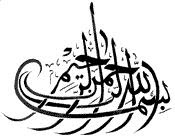







On the near side is the Jempol river, behind is that of Muar. However please take note, the rivers used to be much wider then and the people from Pasai are believed by some to have settled in this area sometime between the 10th and 12th Century AD!

Ah... Let me just use this explanation from Wikipaedia ya...
In the old days, Pahang River and Muar River were nearly connected at a place called Jempol, in Negeri Sembilan. This was because the Serting River flows into the Bera River, a tributary of the Pahang River. Jempol River flows into Muar River. Trading boats from River Muar could continue their journey until they reach Kuala Pahang in Pekan, or Kuala Lipis to continue into Terengganu, Kelantan or Perak.
At Jalan Penarikan, the locals help will be required to pull the boats overland. The distance is about 300 meters and because of the pulling of boats overland, the route is named Penarikan, which is the Malay word for pulling.
Jalan Penarikan could have been discovered in the 14th century, way before the days of Malacca Empire. The Arab merchants were actively trading as well as spreading Islam. When Malacca was discovered, they came to Malacca for trade and at the same time; the Pasai came to Malacca too to acquire their daily sundries. Coincidently, these are the same group of people whom they spread the religion to. The Arabs complained to the Pasai about the trials and tribulations of trading in Siam because of the arduous journey through the Strait of Malacca, then on the Straits of Terbrau before they can continue the voyage through the South China Sea towards their destination in Siam. This voyage which take weeks is extremely lengthy and difficult. After listening to the grouses of the Arab merchants, the Pasai revealed that there was a short cut where they could avoid the arduous voyage.
However, they have to pull their boats off shore for a kilometer or so. Learning of this, the Arabs endeavoured to try out this route. One day, the Pasai show this route to the Arabs. First, they sailed from Malacca along the Muar River to reach Jempol River, where they have to pull the boats on shore for a short distance to get into the Serting River. They then continue their journey along the Bera River to arrive at Kuala Bera from which they proceeded to the South China Sea via Pahang River — and finally to their destination in Siam. The Arabs discovered that even though they have to go on land for a part of the journey, it was very much shorter. So from that day onwards, they decided to use this route and Jalan Penarikan became famous ever since.
Jalan Penarikan played a vital role in the military operations between Siam and Malacca. Using this route, the Siamese have launched many attacks against Malacca. A troop was sent to make an ambush. Half of the troop stayed near Jalan Penarikan as backup and the other half attacked Malacca. However, the backup group has another mission, they have to dig a big canal measuring 30 feet by 20 feet in depth, so that they could connect the two rivers, Jempol and Serting River.
A leader of the Thai Army was later buried near Jalan Penarikan. The tombstone was believed to have been transported all the way from Thailand. The Siamese leader's grave could still be found near Jalan Penarikan. One interesting feature of the tombstone is that the year depicted was 1265.
Jalan Penarikan has also witnessed many significant events in history. The famous Malaccan warrior Hang Tuah, while on the run with Tun Teja, used Jalan Penarikan to flee to Pahang. The last Sultan of Malacca, Sultan Mahmud Shah, after the conquest of Malacca by the Portuguese had also used Jalan Penarikan to escape to Pahang.
In the year 1613, a Portuguese officer wrote that he took a boat from the River Muar to the Pekan, in Pahang and the journey took him six days. A map produced in 1598 showed that the Muar River and the Pahang River is connected at a place which is now called Serting, in Jempol Negeri Sembilan.
The Pahang River - Muar River route is a safer route to the South China Sea or to the Straits of Malacca, because there were no disturbances and threats of piracy that reign the seas.
Apart from that there were also signs of trading activities, whereby goods changed hands at this point. These means the boats from Pahang with the produce they carry stopped here, transact and pick up goods that are east bound and return back to Pahang. Similarly, boats from Muar, bringing goods from Malacca and Singapore were brought to Penarikan, where barter trade occurred.
 I'm sorry if my way of story-telling is disturbed. The computer I'm using at a Cyber-Cafe in Kemaman, Terengganu is just too painfully slow. Still, the story-telling must go on. So I used this bridge to cross the river Jempol...
I'm sorry if my way of story-telling is disturbed. The computer I'm using at a Cyber-Cafe in Kemaman, Terengganu is just too painfully slow. Still, the story-telling must go on. So I used this bridge to cross the river Jempol...
I wanted to have a good look at the "penisular" which is where the rivers Muar and Jempol first meet...



 Nevertheless I safely did it. Here's a look at the confluence from the other side. That's all! Cheers! :]
Nevertheless I safely did it. Here's a look at the confluence from the other side. That's all! Cheers! :]









